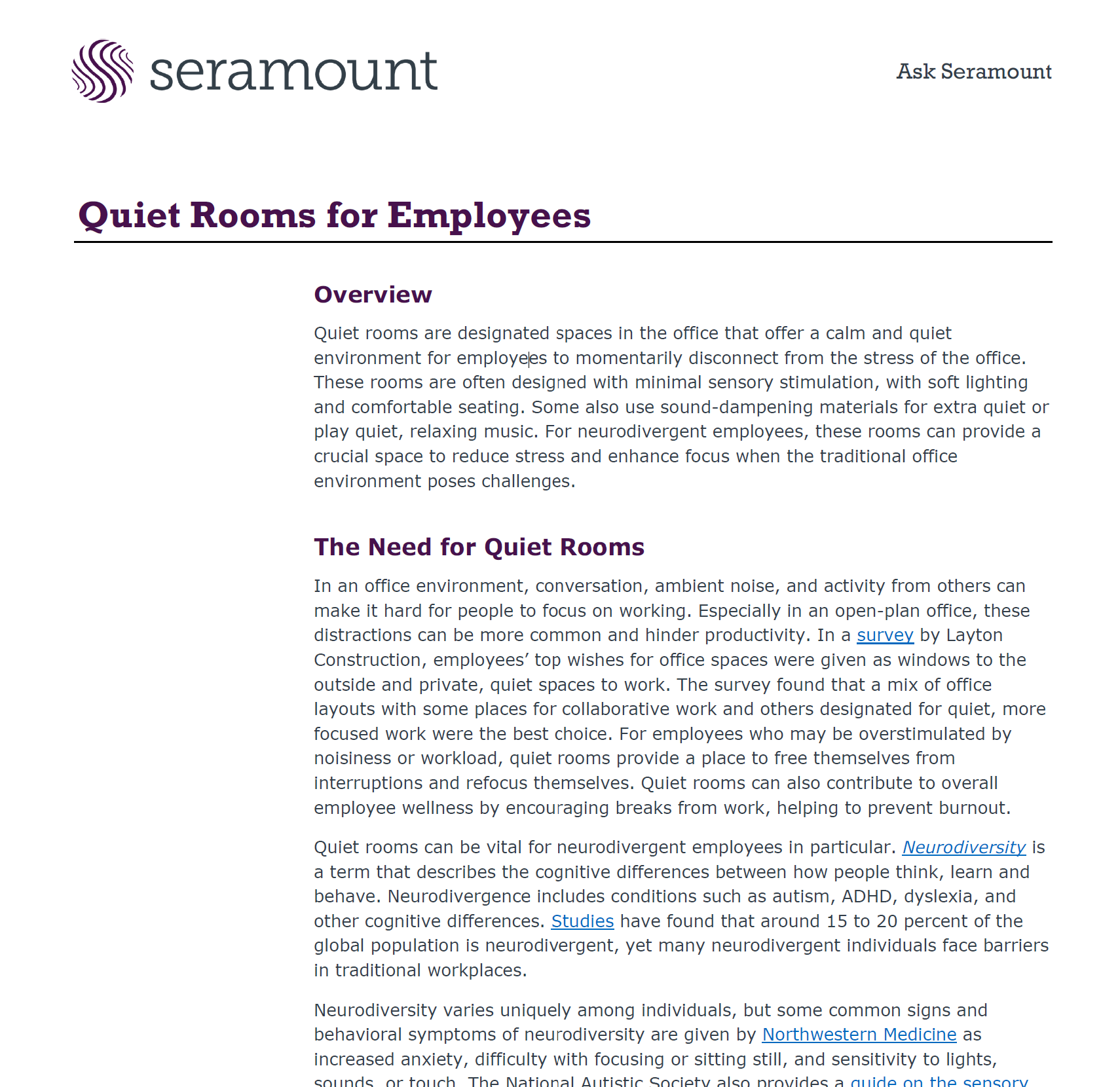This report explores how quiet rooms help employees manage stress, improve focus, and support neurodivergent colleagues in busy office environments. Designed with low lighting, soft textures, and minimal sensory input, these spaces reduce overstimulation—especially valuable in open-plan offices. Examples from Texas Instruments, Adobe, and Unilever show how companies use quiet or sensory rooms to promote well-being, mindfulness, and focus. The guide also offers practical design suggestions for lighting, sound, and tactile elements, highlighting how thoughtful, sensory-friendly spaces can enhance employee wellness and productivity.
Guides and Tools
Quiet Rooms for Employees: Creating Inclusive Workspaces
Sign in to view this resource
Please sign in to access this and other member resources. If you are not yet a Seramount member, please email us at [email protected].
Related
Full size image view




